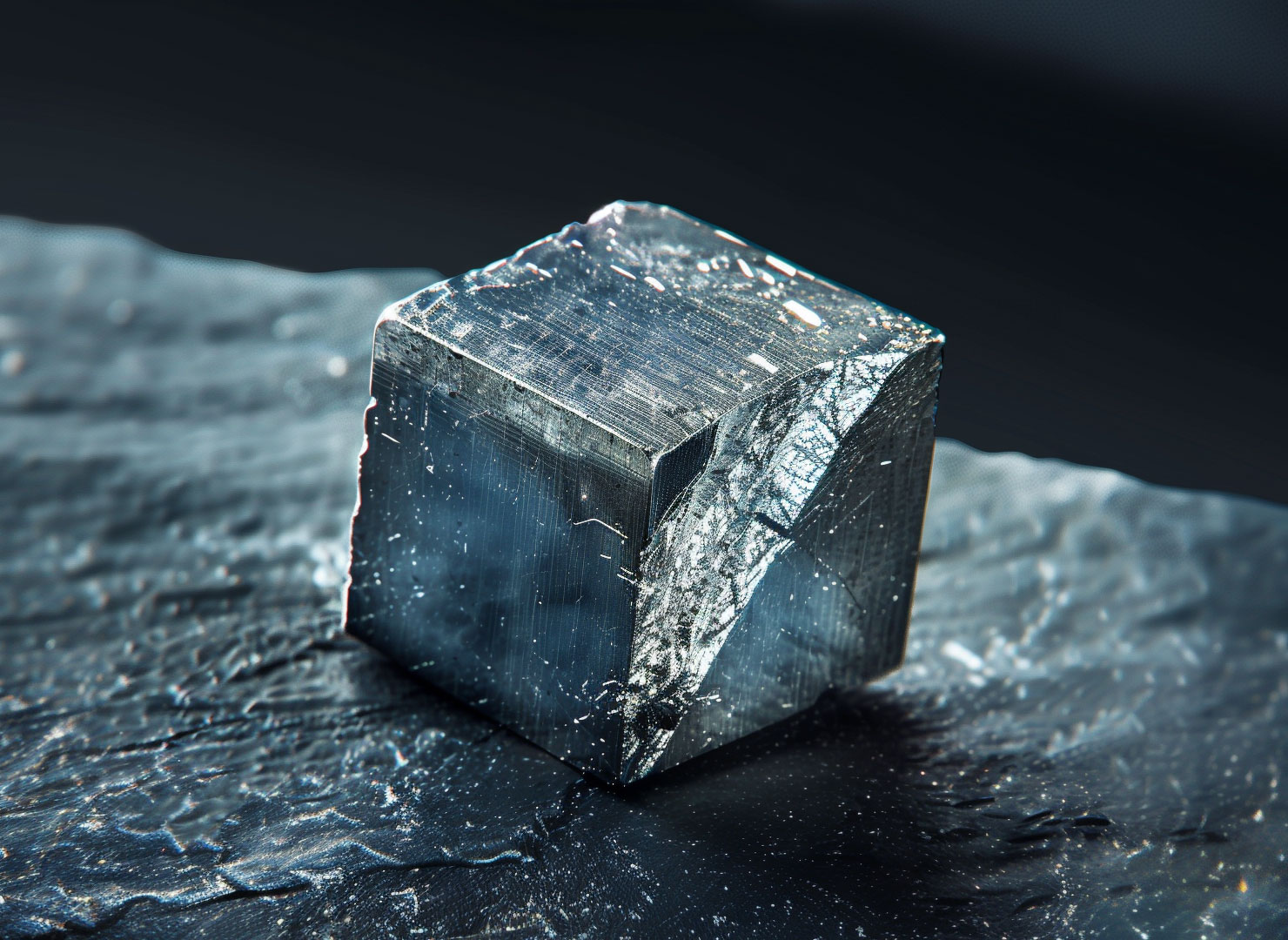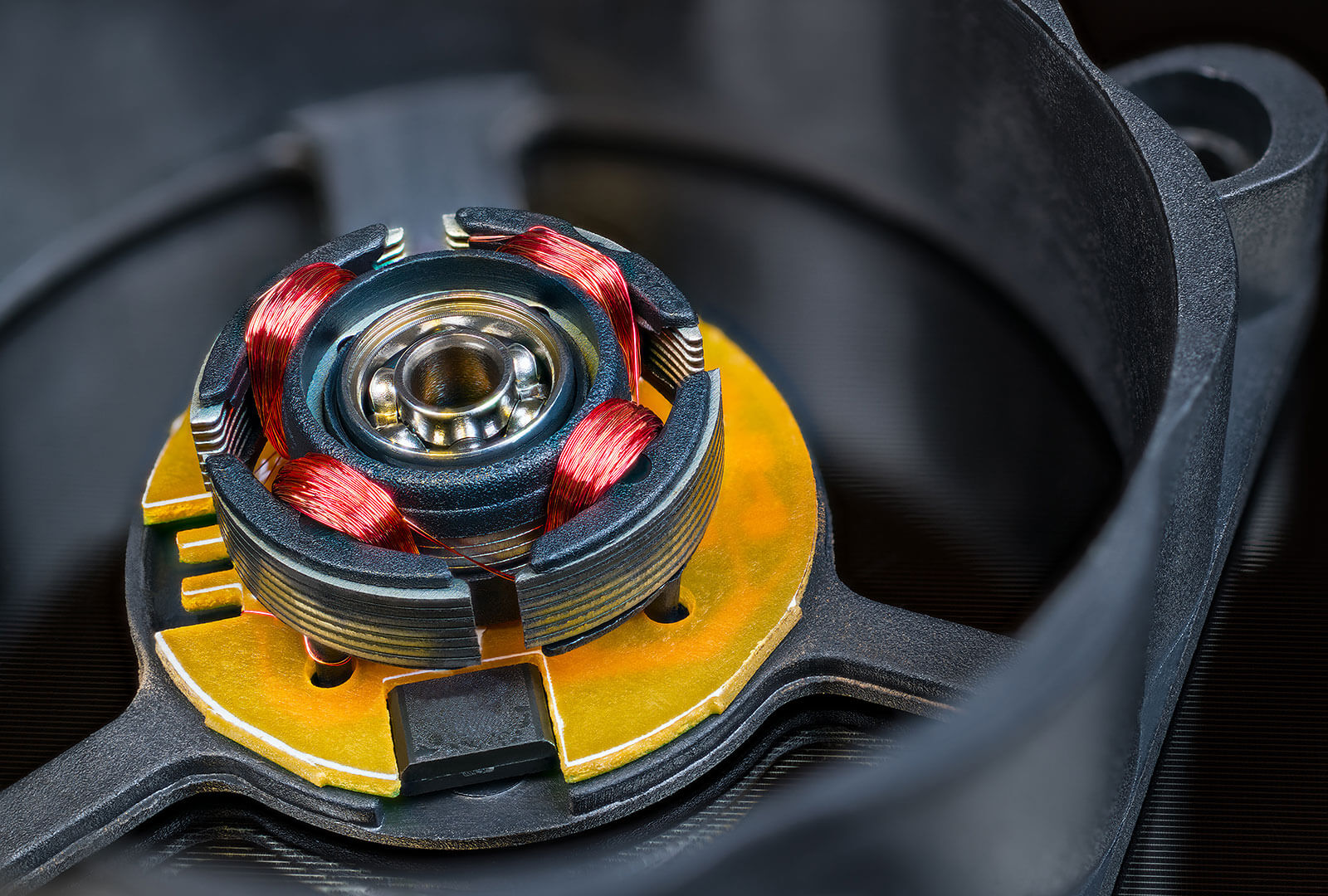The Element Neodymium
On this page you can find out more about the rare earth element
Name: Neodymium
Symbol: Nd
Ordinal number: 60
Density: 7,01 g/cm3
Melting point: 1.021 °C
Boiling temperature: 3.068 °C
Neodymium is one of the lanthanidesA group of 15 elements with chemically very similar properties. in the periodic table.
Introduction
Neodymium: An Indispensable Element in the Energy Transition
In the periodic table, neodymium (atomic number 60) belongs to the lanthanides group, part of the rare earth elements. Neodymium is counted among the so-called light representatives of this group. The most important area of use for neodymium and a key demand driver is permanent magnets for electric motors, wind turbines, and consumer electronics.

Discovery Took Place in Stages
The discovery of neodymium took place gradually over many decades. In 1841, the Swedish chemist Carl Gustav Mosander extracted the rare earth metal didym from cerite, a mixture of oxides of various lanthanides known since the beginning of the 19th century. The name “didym” is derived from the Greek word for twin and refers to the great similarity of the supposedly newly discovered element to the rare earth metal lanthanum, which was also separated from cerite earth. However, the real twins ultimately turned out to be neodymium and praseodymium: in 1874, the Swedish natural scientist Per Teodor Cleve recognized that didym was made of these two elements . However, it was not 1885 that the Austrian chemist Carl Auer von Welsbach succeeded in separating them. The name neodymium goes back to the Greek words for “new” and “twin,” while praseodymium became the “green twin” due to the color of some of its compounds.
Main areas of application for neodymium

The Discoverer of Neodymium
Born in Vienna in 1858, the chemist Carl Freiherr Auer von Welsbach is one of Austria’s most famous scientists. Von Welsbach achieved fame through his success as an entrepreneur and inventor, among other things. This discoverer of several rare earths conducted research in a laboratory in his own castle, among other places.
Characteristics
Neodymium: Irritant and Highly Flammable
Unusually for a metal, silvery-white shiny neodymium is irritating and highly flammable. It is considered to be very reactive but is somewhat more resistant to corrosion in air compared to other rare earths. Neodymium compounds are usually pink to blue-violet. Like the other lanthanides, the rare earth metal is paramagnetic, which means that it only exhibits magnetic properties when an external magnetic field is applied, as this strengthens the magnetic field inside the material.
Areas of Application
Strong Permanent Magnets Most Important Field of Applications
The most common applications of neodymium and an important global demand driver are the powerful permanent magnets used in electric motors, wind turbine generators, nuclear magnetic resonance scanners, military technology, and consumer electronics such as headphones and loudspeakers. The alloy neodymium-iron-boron (NdFeB) is used in their production. NdFeB magnets can permanently carry hundreds to thousands of times their weight, enable high performance with low mass, and are approximately 40 percent stronger than samarium-cobalt magnets of the same size. However, the latter are considerably more heat-resistant.
Neodymium has been used since the 1960s to decolor and color glass, produce pale pink to blue-violet hues, and make protective eyewear for welding and anti-reflective coatings for glass. The neodymium:YAG laserA neodymium-doped yttrium-aluminum-garnet crystal forms the basis of the neodymium:YAG laser. is suitable for high-precision applications and is widely used in industry and medicine. Other minor areas of application for neodymium are alloys and battery alloys.

Permanent Magnets
Permanent magnets retain their magnetic force without external energy inputs. They are in great demand in areas that require high power density, such as electromobility and wind power. They are the driving force behind many environmentally friendly technologies.
Learn more

Wind Power Technology
Wind turbines use generators to convert wind energy into electricity. Many of these generators use permanent magnets made from rare earths to make the systems powerful, easy to maintain, and quiet. Wind power technology will play a crucial role in a successful energy transition.
Learn more

Electromobility
The beginnings of electromobility date back to the 19th century. Due to the fight against climate change, this technology is experiencing a renaissance and driving demand for powerful magnets that convert electricity into kinetic energy in electric motors.
Learn more

Pigments
One of the first uses of rare earths was to color glass and enamel. Rare earth pigments produce colors, including yellow, blue, green, pink, violet, and orange.
Learn more
Deposits
Neodymium: Critical Market Situation Worldwide
Neodymium occurs naturally almost everywhere in the earth’s crust, but always in combination with other lanthanides and only rarely in quantities that allow for economical mining. Primary extraction of rare earths is also difficult due to their low concentration. The most common sources are the minerals bastnäsite and monazite. Most rare earth mining (around 60 percent) takes place in China.
The Bayan Obo deposit in China, Mountain Pass in the US, and Mt. Weld in Australia are currently important neodymium mining sites.

Value Chains Should Become More Independent
Other large but largely untapped reserves of rare earths are located in Vietnam, Brazil, and Russia. In most global deposits, neodymium – like the other light rare earths lanthanum, cerium, and praseodymium – is much more common than the heavy representatives of the rare earth group.
The global market situation is considered critical, as China dominates the mining of raw materials and further processing into products such as permanent magnets. The rare earth element group is, therefore, classified as a critical raw material by the U.S., the European Union, and the United Kingdom, and more independent value chains are being sought.
Price Development
The Price of Neodymium as a Physical Asset
At TRADIUM, private customers can buy neodymium as a physical asset. The following price chart shows the price development of the rare earth metal in its most common trading form. The chart is for information purposes only and does not reflect an offer to purchase.
Here you can find the price charts for other rare earths available as physical assets from TRADIUM.
Raw Materials Trading Industrial Customers
TRADIUM trades in all industrially relevant rare earth oxides. Choose from a wide range of specifications and take advantage of the option to reserve batches for the long term.
Purchase of Physical Assets for Private Customers
Benefit as a private customer from the exciting market for rare earths as a physical asset. You can find out here what opportunities TRADIUM offers and what tax advantages a purchase of raw materials entails.